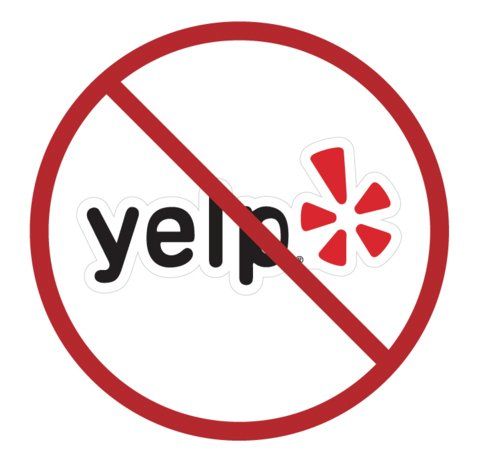Employee Body Odor Guidance
What do you do when you have a strong odor coming from one of your employees?
We recently saw this post in one of the trade groups. This situation needs to be handled properly so that the situation does not escalate to the harm of all parties involved.
Below is a structured, conversational guide for restaurant management on handling the sensitive issue of an employee with severe body odor. Each step references key considerations from reputable HR and legal resources.
Preparation & Policy Alignment
Review Existing Policies
Before initiating any conversation, take a moment to look over your restaurant’s
employee handbook or
HR policy. Many organizations include sections on personal hygiene or dress code, which often reference odor-free or fragrance-neutral expectations.
- Check for Specific Language
- If your handbook explicitly mentions “personal hygiene,” use that as your foundation.
- If the language is vague, plan to clarify or update the policies to be more explicit about hygiene standards.
- Ensure Legal & Cultural Sensitivity
- Americans with Disabilities Act (ADA) considerations: If an underlying medical condition (e.g., hyperhidrosis) causes body odor, employers may need to accommodate the employee within reason. (Source: EEOC Guidance on ADA)
- Cultural or religious practices: Some employees may have personal grooming habits tied to culture or religion. Speak to an HR specialist if you’re unsure how to approach this topic respectfully.
Communication Strategy
Set the Right Tone: Empathy & Privacy
Approach the conversation in a private, discreet setting—like a manager’s office or a quiet corner. Emphasize that your intent is to protect the employee’s professional image and ensure a comfortable work environment for everyone.
- Opening the Conversation
- Lead with understanding: “I really value your contributions here—you’ve been an essential part of our team. However, I’ve noticed something that might be impacting your comfort and interactions with our guests.”
- Be clear and factual: “Some team members have noticed a strong odor, and I wanted to discuss this with you to find a helpful solution.”
- Active Listening
- Give the employee a chance to respond or explain any factors that might be at play (medical conditions, living situation, cultural practices).
- Avoid making assumptions or jumping to conclusions—foster a genuine, respectful dialogue.
- Managing Emotions
- Acknowledge feelings of embarrassment: “I understand this is a sensitive topic, and I appreciate your willingness to discuss it openly.”
- Reassure that the goal is support, not reprimand.
Actionable Steps & Support
Provide Practical Solutions
After laying out the concern, shift focus to actionable ways the employee can address and improve the situation.
- Review Hygiene Guidelines Together
- Reference any official restaurant policies on uniforms, showering, deodorant usage, etc.
- Ask if the employee needs any resources—some workplaces offer deodorant or uniform laundry services on-site.
- Offer Support & Clarify Expectations
- Medical/Healthcare Resources: If the odor might be due to a medical issue, suggest checking with a doctor. Under the ADA, you may need to explore reasonable accommodations if the situation qualifies as a disability.
- Uniform and Laundering: Discuss frequency of uniform changes. Provide extra uniforms if possible.
- Possible Sensitivities: Explore if the odor is related to certain dietary practices or chemicals used at work.
- Document the Discussion
- According to Society for Human Resource Management (SHRM) guidelines, it’s wise to keep a brief, factual record of when this conversation took place, what was discussed, and next steps. (Source: SHRM Documentation Best Practices)
Follow-Up & Monitoring
Create a Supportive Follow-Up Process
Tackling the matter once isn’t always enough; a quick, respectful follow-up ensures the issue is resolved and prevents future misunderstandings.
- Schedule a Check-In
- Set a date a week or two later to touch base privately: “Let’s reconnect in a week to see if you feel more comfortable and if everything is on track.”
- This sends the message that you care and are willing to help.
- Respect Privacy
- Keep any follow-up discussions confidential. The employee should feel safe that their personal situation isn’t broadcast to the rest of the team.
- Reinforce Positive Change
- If there’s an improvement, acknowledge it: “I really appreciate the effort you’ve made. It’s noticed by everyone, and it helps keep our team comfortable.”
Sustaining a Positive Work Environment
Institutionalize Best Practices
Finally, use this experience as a springboard to strengthen your workplace culture and uphold hygiene standards.
- Update or Clarify Policies
- If your handbook lacks clarity, add a short section that highlights personal hygiene expectations, uniform care, and respectful workplace communication.
- Ongoing Training
- Host brief sessions on professional appearance and hygiene to create a proactive environment where standards are understood and reinforced.
- Tie it into overall food safety standards—the CDC and local health departments emphasize the importance of personal cleanliness in restaurant settings. (Source: CDC - Food Service Guidelines)
- Encourage Open Communication
- A supportive team culture thrives on transparent, empathetic conversation. Encourage staff to approach management with any workplace concerns.
Potential Pitfalls to Avoid
- Public Confrontation: Never address body odor in front of other employees or customers. Always have the conversation in a private space.
- Discriminatory Language: Avoid making any comments that could be construed as biased or insensitive (regarding race, religion, disability, etc.).
- Neglecting Follow-Up: Failing to check back with the employee can leave issues unresolved or deepen embarrassment.
Summary
Addressing an employee’s severe body odor in a restaurant setting requires a balance of respect, empathy, and professional clarity. By reviewing existing policies, having a private and supportive conversation, offering actionable resources, and following up to ensure continued success, you cultivate a positive environment for both employees and guests. Remember to document the conversation appropriately and seek expert HR advice if any legal or cultural nuances arise.
References & Resources
- EEOC Guidance on ADA: https://www.eeoc.gov/laws/guidance
- SHRM Documentation Best Practices: https://www.shrm.org/resourcesandtools/tools-and-samples/hr-qa/pages/documentation.aspx
- CDC - Food Service Guidelines: https://www.cdc.gov/foodsafety/
By incorporating these steps and insights, restaurant managers can maintain a hygienic, comfortable dining environment and support their employees in a respectful, legally sound manner.










